Quartzites de la Roche Maurice
Il s'agit d'une Earthcache, il n'y a pas de récipient à chercher.
La localité de La Roche-Maurice se situe dans la vallée de l’Elorn, entre Landerneau et Landivisiau. Les terrains briovériens affleurent le long de la route qui descend depuis le château vers la vallée de l’Elorn. Un sentier aménagé remontant depuis ce niveau vers le château permet d’accéder à la base des quartzites ordoviciens. Ces deux roches locales avec le granites ont étés utilisées pour la construction du château de Roc’h Morvan.
Les pierres du château
Les pierres du château ont bien souvent été extraites sur place, par mesure d’économie. Des schistes de couleur sombre, assisés régulièrement et des blocs de quartzite de couleur grise, calés par des pierres plus petites, ont été utilisés dans les maçonneries. Seules les pierres des fenêtres, des portes et des angles du donjon sont en granite, un matériau extrait à quelques kilomètres au nord-ouest du château. La comparaison des divers appareillages nous renseigne sur les différentes techniques de construction.
Le Schiste
Un schiste est une roche tendre, à grain fin invisible à l’œil nu, qui a pour particularité d'avoir un aspect feuilleté. Les schistes se débitent en plaques fines ou « feuillet rocheux ». On dit qu'ils présentent une schistosité. Il s’agit d'une roche métamorphique. Les schistes briovériens de la Roche Maurice résultent de la transformation d’un matériel sédimentaire initial de « type vase », consolidé dans un premier temps et aplati ou schistosé secondairement.

Le Quartzite
Le quartzite est une roche siliceuse massive, constituée de cristaux de quartz soudés. C’est une roche métamorphique d’origine sédimentaire. Il présente une cassure conchoïdale. Il est constitué presque que du quartz. Ces roches appartiennent à la formation des Quartzites de la Roche-Maurice, datée de l’Arenig (Ordovicien). Sa couleur est généralement claire.
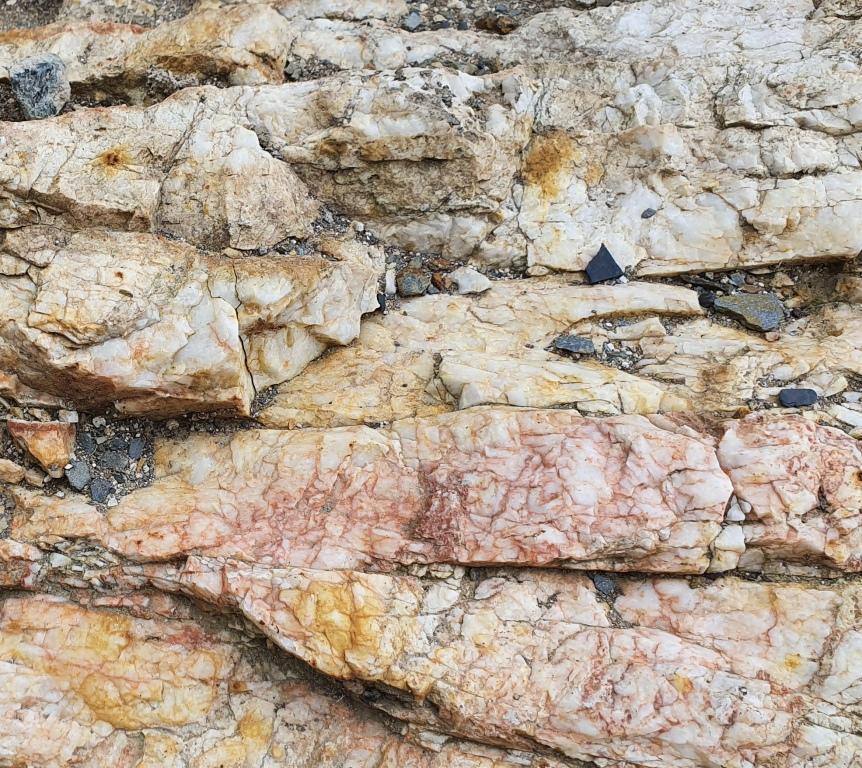
Couleur de la roche
Dans les roches (principalement sédimentaires) formées en milieu oxydant contenant du fer, on trouvera des couleurs allant du jaune, orange, rouge, jusqu’à brunâtre. Si le milieu est réducteur (et contient du fer), la couleur générale est verte.
Le Granite
Le granite est une roche magmatique, plutonique à texture grenue. Le grain est souvent visible à l’œil nu. Il se compose principalement de cristaux de feldspath, quartz et micas. C’est une roche résistante utilisée souvent en construction.

Sources
Carte géologique de la France à 1 /50 000 Brest
Revue archéologique de l’Ouest Pour une géo-archéologie du Patrimoine : pierres, carrières et constructions en Bretagne
Wikipédia
Questions pour valider cette Earthcache :
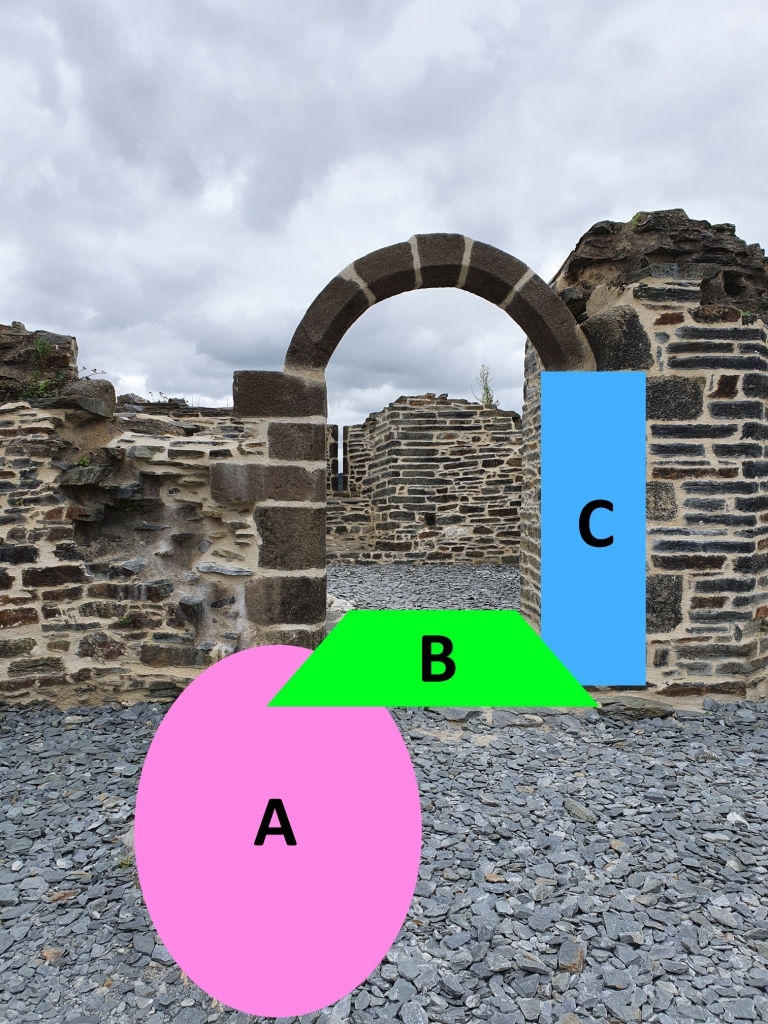
- Aux coordonnées de la Earthcache, en haut de l’escalier monumental, observez la porte de la Photo 1. Quelles roches se trouvent sous l’ovale rose A, trapèze vert B et rectangle bleu C ?
- Descendez l’escalier au WP2. Quelle roche se trouve sous l’ovale jaune E ? Que se cache-t-il sous le rectangle orange D et sous le triangle rouge F ?
- Une photo de vous ou d’un objet vous représentant sur le site.

Loguez cette cache "Found it" et envoyez-moi vos propositions de réponses soit via mon profil, soit via la messagerie geocaching.com (Message Center), et je vous contacterai en cas de problème. Les logs enregistrés sans réponses seront supprimés.
English version
Quartzites from Roche Maurice
This is an Earthcache, there is no container to look for.
The town of La Roche-Maurice is located in the Elorn valley, between Landerneau and Landivisiau. The Brioverian land is flush with the road leading down from the castle to the Elorn valley. A landscaped path going up from this level to the castle provides access to the base of the Ordovician quartzites. These two local rocks along with granites were used for the construction of Roc’h Morvan castle.
The stones of the castle
The stones of the castle have often been quarried on site, to save money. Regularly seated dark shales and gray colored quartzite blocks wedged by smaller stones were used in the masonry. Only the stones of the windows, doors and angles of the keep are granite, a material mined a few kilometers northwest of the castle. The comparison of the various devices informs us about the various construction techniques.
Shale
A shale is a soft, fine-grained rock invisible to the naked eye, which has the particularity of having a layered appearance. The shales are cut in fine plates or “rock sheets”. They are said to have schistosity. It is a metamorphic rock. The Brioverian schales of Roche Maurice result from the transformation of an initial sedimentary material of "mud type", consolidated initially and flattened or schistose secondarily.

Quartzite
Quartzite is a massive siliceous rock, made up of fused quartz crystals. It is a metamorphic rock of sedimentary origin. It presents a conchoidal break. It is made almost entirely of quartz. These rocks belong to the Quartzite formation of Roche-Maurice, dated to the Arenig (Ordovician). Its color is generally light.
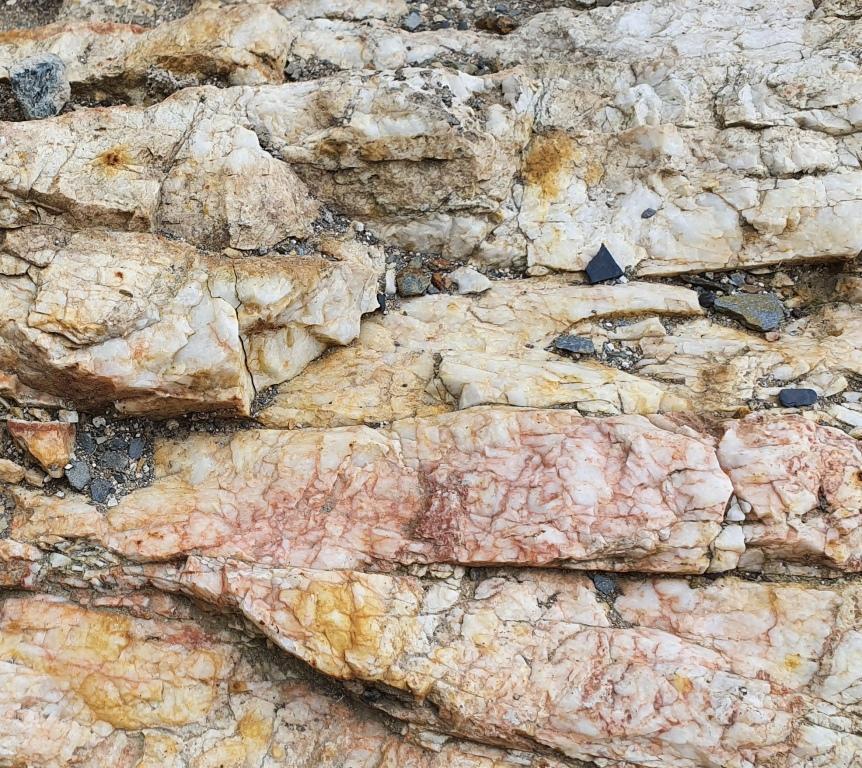
Rock color
In rocks (mainly sedimentary) formed in an oxidizing medium containing iron, we will find colors ranging from yellow, orange, red, to brownish. If the medium is reducing (and contains iron), the general color is green.
Granite
Granite is a magmatic, plutonic rock with a grainy texture. The grain is often visible to the naked eye. It is mainly composed of crystals of feldspar, quartz and mica. It is a tough rock often used in construction.
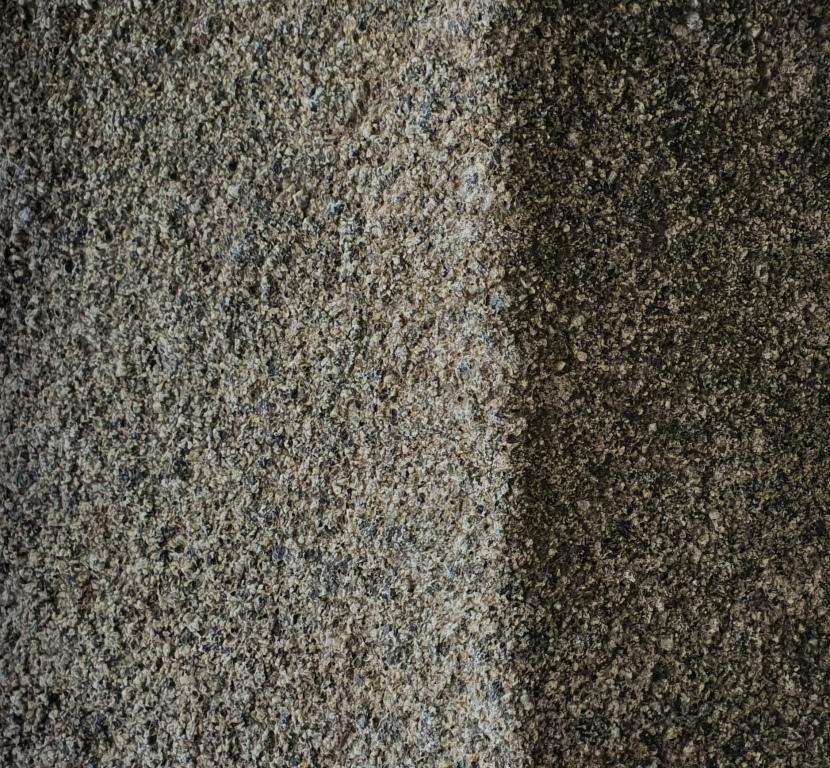
Questions to validate this Earthcache:

1. At the coordinates of the Earthcache, at the top of the monumental staircase, observe the door in Photo 1. What rocks are under the pink oval A, green trapezoid B, and blue rectangle C?
2. Go down the stairs to WP2. What rock is under the yellow E oval? What is hidden under the orange rectangle D and under the red triangle F?
3. A photo of you or an object representing you on the site.
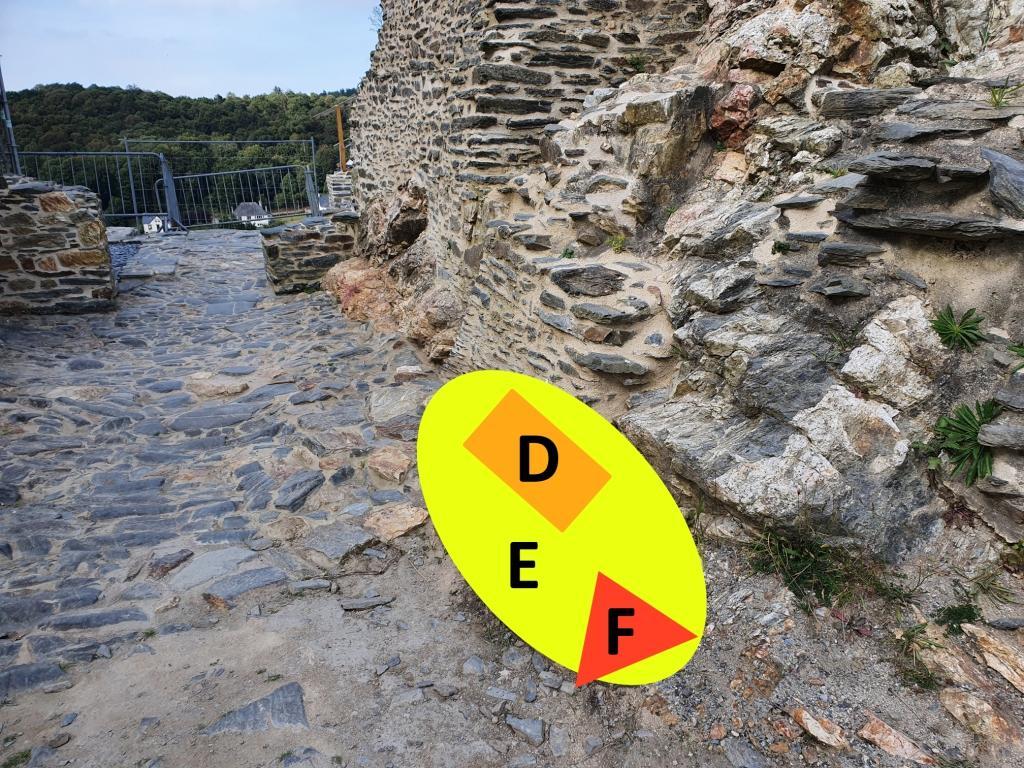
Log this cache "Found it" and send me your suggested answers either via my profile or via geocaching.com messaging (Message Center), and I will contact you in the event of a problem. Logs recorded without response will be deleted.